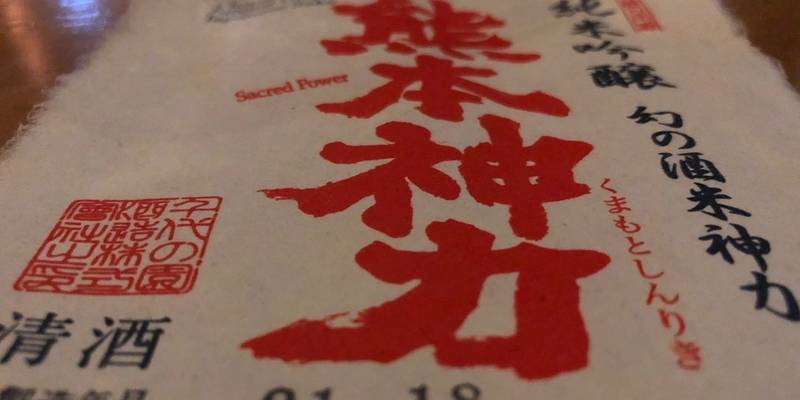One of the things that I enjoy about this community is it’s spirit of collaboration, and that was certainly on display Tuesday evening as Japan House and the trifecta of Miga, Sakanaya, and soon to open Naya restaurants came together to host an evening of sake tasting and food sampling. The event broadened the idea of community by bringing representatives from two Japanese small batch sake breweries: Yuri Honda (pictured below) from Chiyonosono brewery and Dr. Sato from Kanbara brewery, who spoke to the attendees about their offerings with the help of Sake Specialist Jonathan Edwards from Vine Connections.
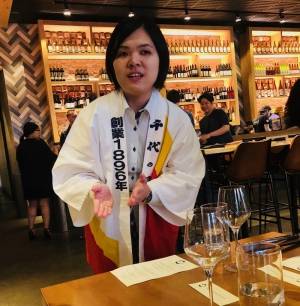
The tasting dinner brought together the talents of chefs Blake Biggs from Miga, Ken Ishibashi from Sakanaya, and Thad Morrow, formerly of Bacaro and soon to be executive chef of Naya, for the first time.
I will admit, I was a little apprehensive about my reviewing capabilities here, as I’ve tried sake maybe once or twice. My sake describing vocabulary is quite lacking. However, I’m going to bank on the fact that there probably aren’t many sake experts ‘round here, and that my amateur take will be accepted. What I can say, is that Edwards’ knowledge and passion on the topic, and his willingness to answer our table’s questions, made the evening just as much a learning experience as a tasting experience.
The tasting included a small bites course, dinner course, and was topped off with some Japanese sweets. Alongside the courses were six different drink offerings, four of them sake and two of them shochu.
Which brings me to the first learning experience of the evening. Shochu is a distilled spirit, and can be made from rice, barley, or sweet potato, among other things. Just as a whiskey or vodka would, it packs a stronger punch than sake with a 25-30% alcohol content. Sake is brewed, in a process similar to beer brewing, and typically has a 15% alcohol content.
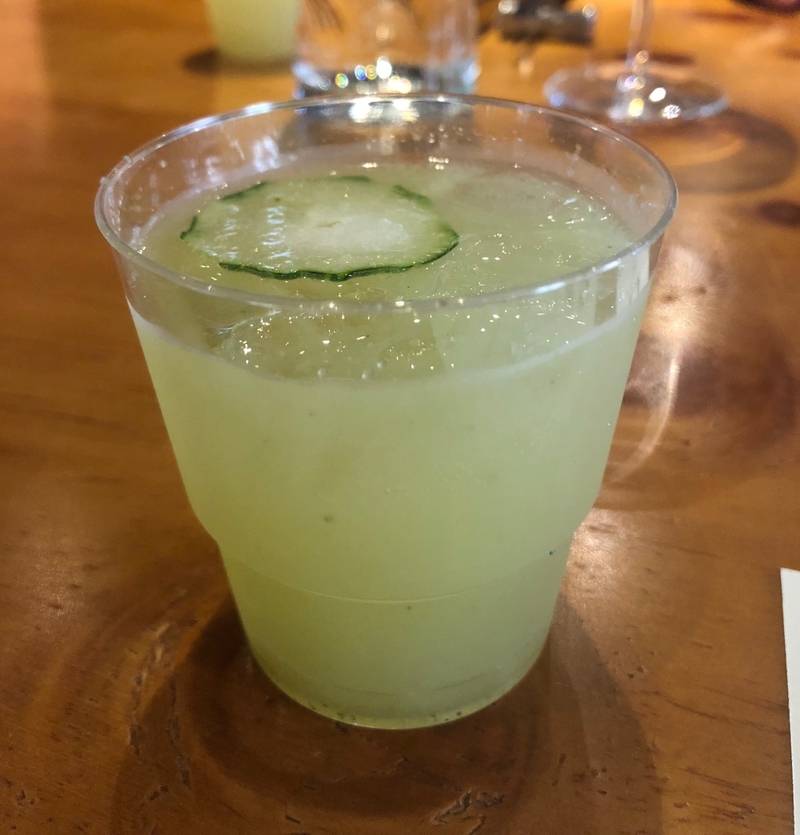
The first item to arrive at the table was a shochu cocktail made with Chiyonosono 8000 Generations shochu, described as “medium-bodied with hints of honeydew and rice flavors.” The folks at Japan House created a lovely and refreshing concoction by adding cucumber (hand-squeezed!), lemon, simple syrup, and soda water. It was crisp, light, summery, and made me feel as though I was sipping cucumber water while lounging at the spa. A possibly dangerous cocktail as there was no obvious taste of alcohol, much like a drink made with a high quality vodka.

The trio of chefs each brought a unique small bite to this pairing. Ishibashi’s cucumber and sugar snap pea Tsukemono (Japanese pickle) was perfectly delightful. The veggies were crunchy and had just the right amount of vinegary flavor, with a hint of sweetness. Biggs created a chicken puff with chopped liver, something that I would not immediately gravitate toward on a menu, but it was delicious, with a ponzu sauce that pulled the flavors together nicely. I was a little concerned after my first bite of the beef “robtata” skewer was not as tender as I would have liked, but the remaining pieces were perfect. The beef had just a touch of heat that slowly built after each bite.
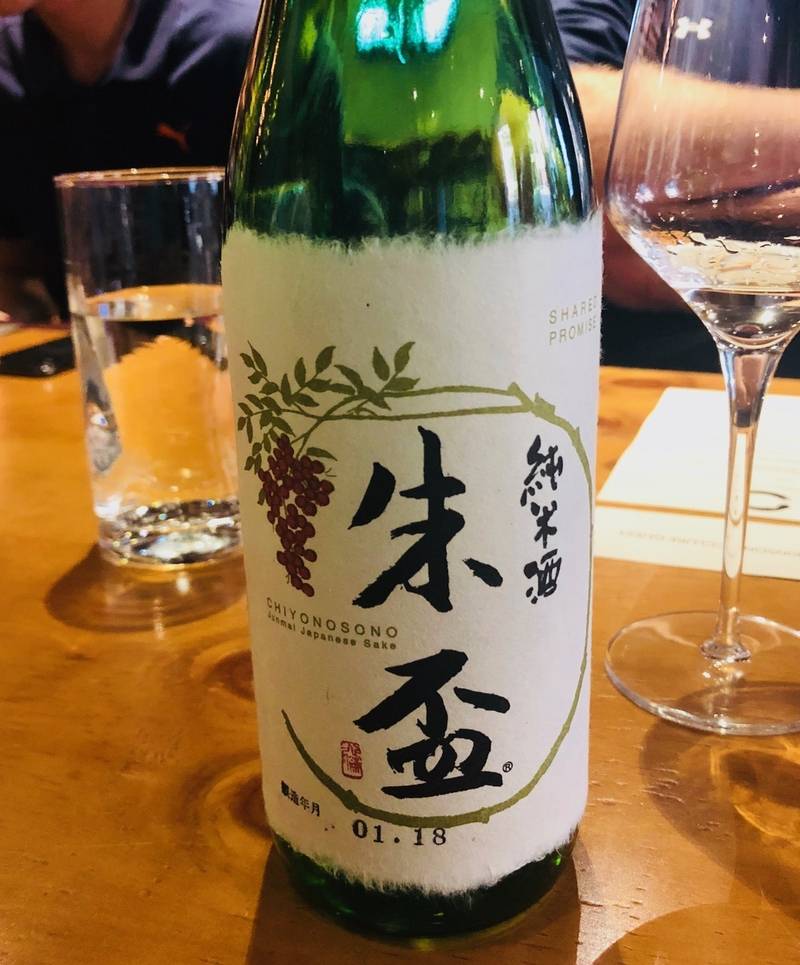
Our second taste was a sake, also from Chiyonosono, called Shared Promise. It was the first sake brewed after World War II, when sake was diluted with distilled alcohol due to rice shortages and rationing. The brewers of Chiyonosono celebrated this by passing a Shuhai, or red lacquered cup, filled with the sake for all to share with a promise to never again compromise the quality of their sake. Shared Promise is a Junmai sake, meaning it’s brewed without any additives, only pure rice, and according to Edwards is the fastest growing segment in sake.
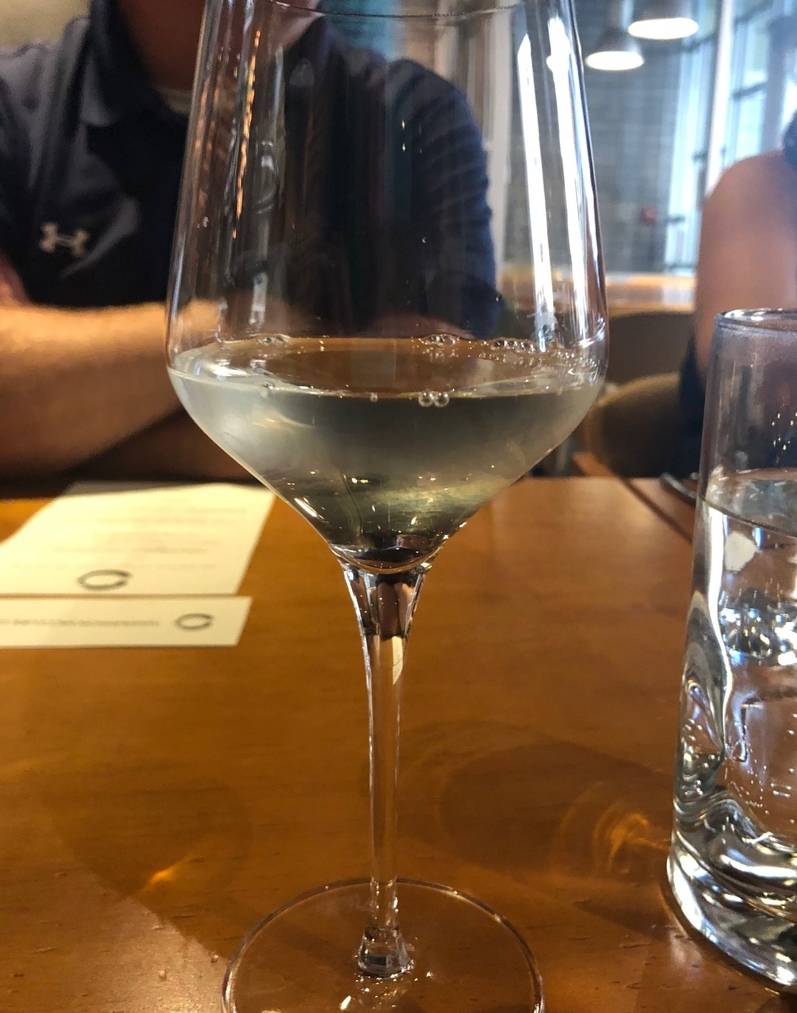
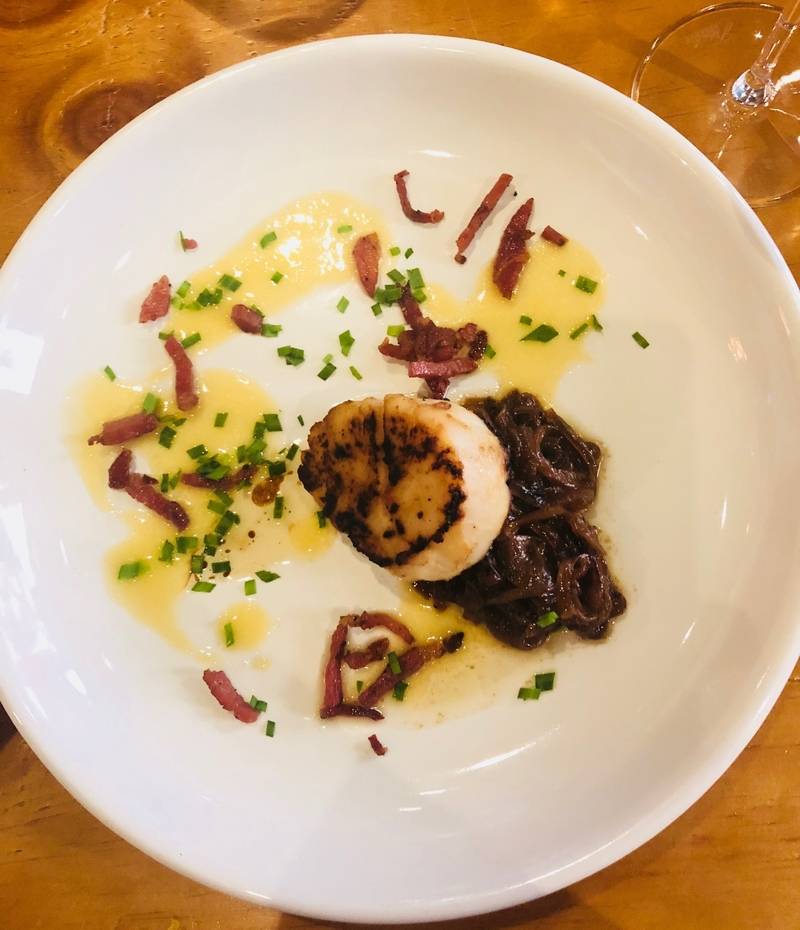
This sake was served in a wine glass, but it has a completely different flavor profile than a glass of wine. The official description of this variety uses words like “soft” and “subtle” and that was exactly what it delivered. Very mild, easy to drink, a hint of sweetness; it evaporated on the tongue. It was a perfect pairing to Morrow’s sea scallop with caramelized onions and crispy prosciutto. This was easily one of my favorites of the night. The scallop had a great sear and melted in my mouth, and the onions (caramelized in the sake we would sample at the end of the evening) had a wonderful full-bodied flavor with the sweetness of the onions and the saltiness of soy sauce blending nicely. A bold sake with the robust flavors of this dish would’ve competed for my attention, but the lightness of the Shared Promise balanced the food well.
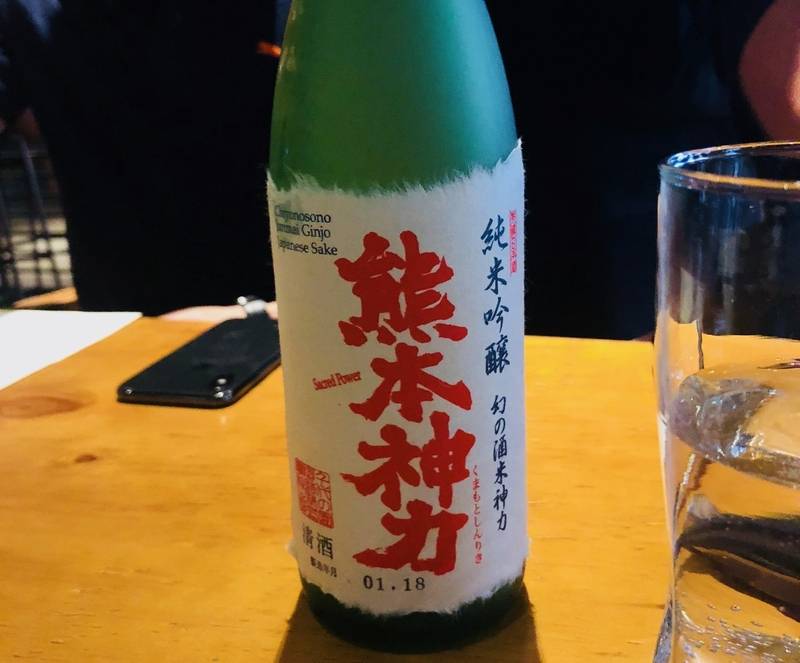
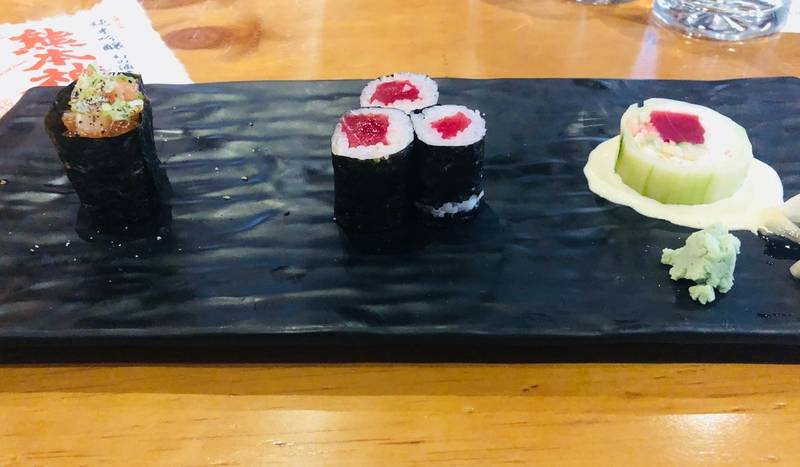
Dinner round two paired another Chiyonosono sake, Sacred Power, with sushi from Ishibashi. Sacred Power comes from the name of the rice varietal, and it’s the most popular rice for sake-making Japan. This one was more full bodied and coated my tongue. Edwards described it as creamy. This was paired with two maki rolls; Tekka Maki, which was simply tuna, rice, and nori, and Salmon Toro Gunkan Maki, made with salmon belly and salmon roe. The third roll was a variation on Sakanaya’s “Big Apple” roll, with tuna, apple, and avocado rolled in cucumber. This sat on top of a smear of wasabi mayo. Of the three this was by far my favorite in terms of flavor and texture, but the most difficult to eat with chopsticks. Picking it up with my fingers was the only way to go. The tuna roll was pretty basic, and the salmon roll was the beautifully constructed, and tasty as well.
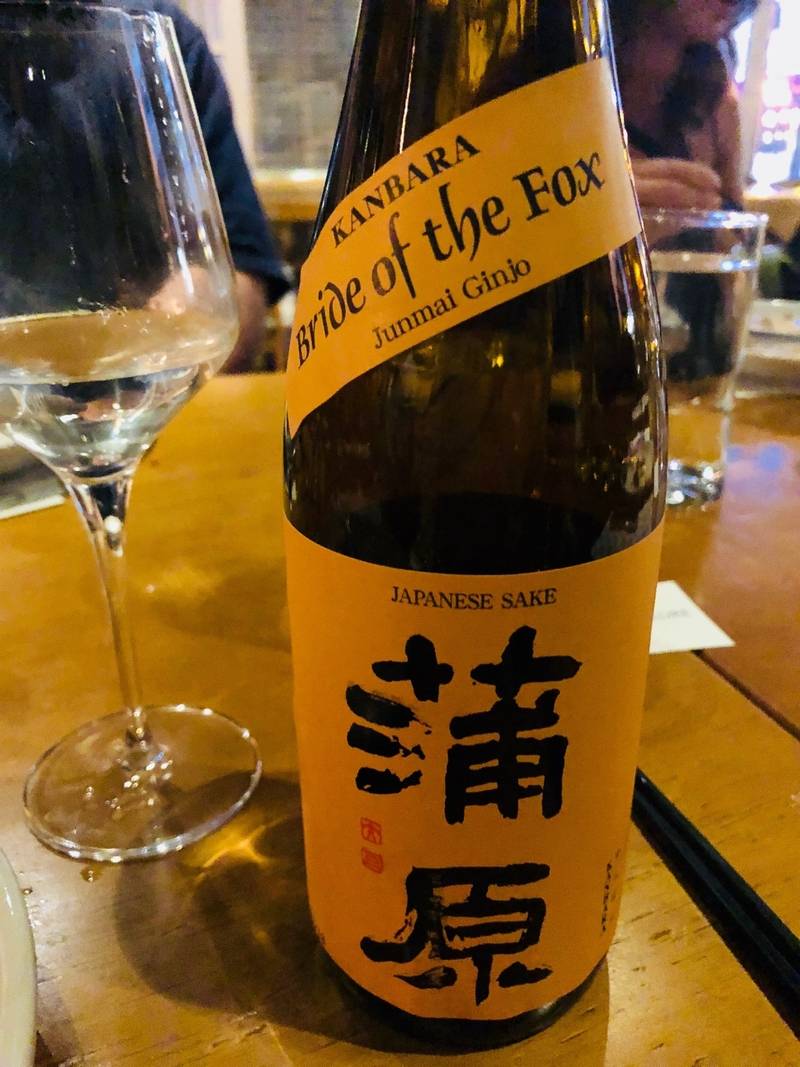
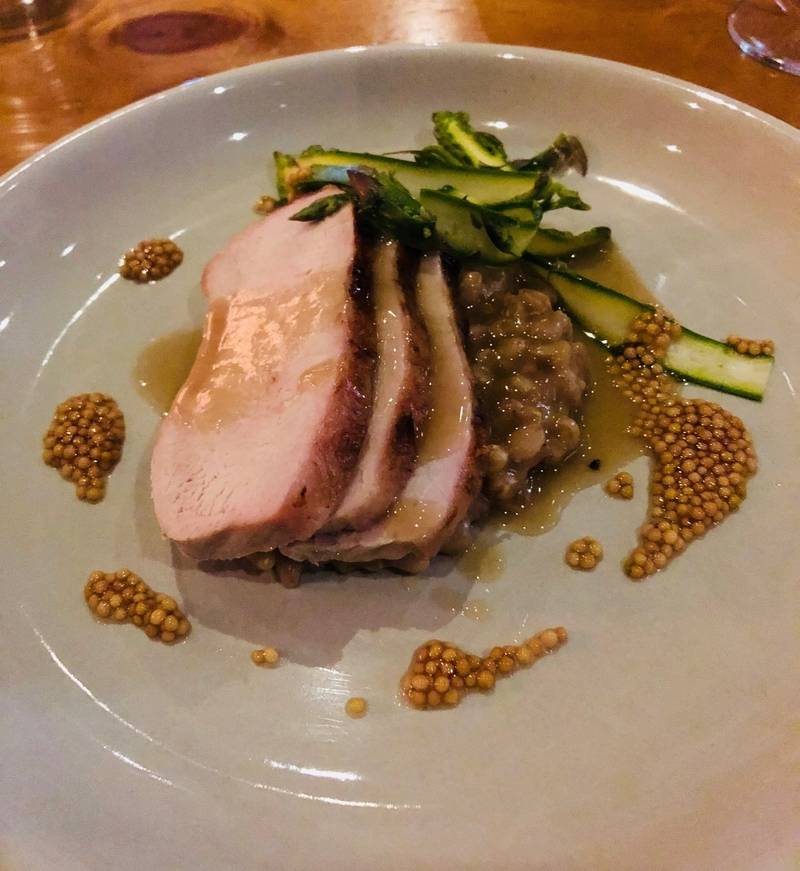
The last dinner round was the heartiest, and would have stood alone as an entree. Biggs prepared a pork loin, farro with miso jus, and shaved asparagus. The pork was tender and not too dry, and the farro had the texture of a risotto. I love asparagus, and have never had it prepared this way before. It was shaved into thin strips and had a vinegary flavor to it. In both color and flavor it provided a great contrast to the rest of the plate. This dish was paired with Bride of the Fox sake from Kanbara brewery. By far the most complex flavor of all that we’d tried, and the more I sipped the more I tasted its sweetness. One of our tablemates instantly recognized hints of white chocolate, which sure enough was in the description.

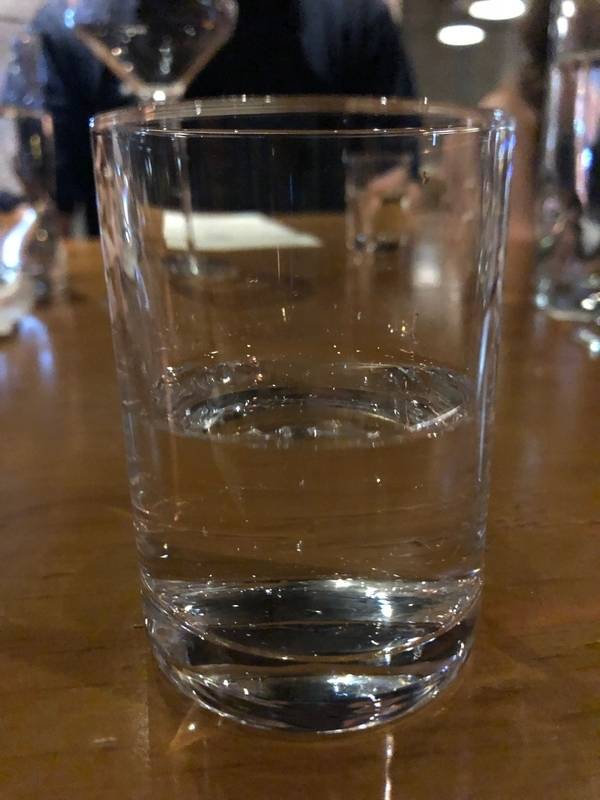
Japan House provided us with Japanese sweets for dessert. The kohakutou, which means amber sugar, looked like hard candy. But when you bit into the crunchy outer layer, there was almost a jelly like texture in the middle. They are made with just two ingredients, brown sugar and agar-agar, which is derived from algae, and were quite sweet. The second dessert bite was a small cake made with matcha with red bean paste inside, and was a familiar flavor and texture. Mildly sweet and chewy. Dessert was served with another shochu, this time on it’s own. Rather than rice, the Black Warrior shochu from Chiyonosono was made from barley, and it was much like drinking a shot of whiskey. Yeah, I had to sip that one.
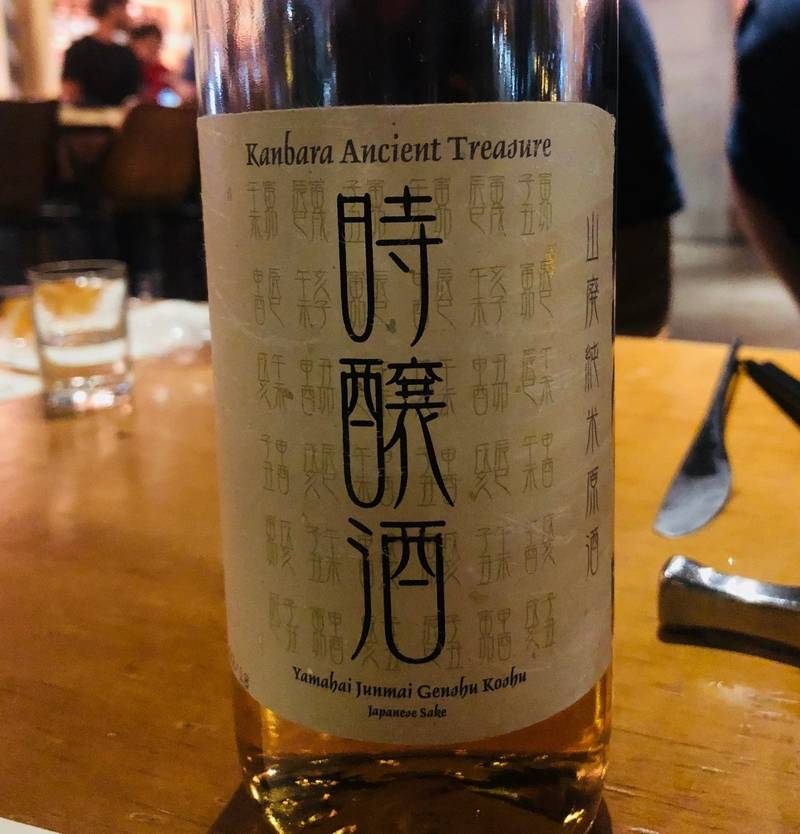
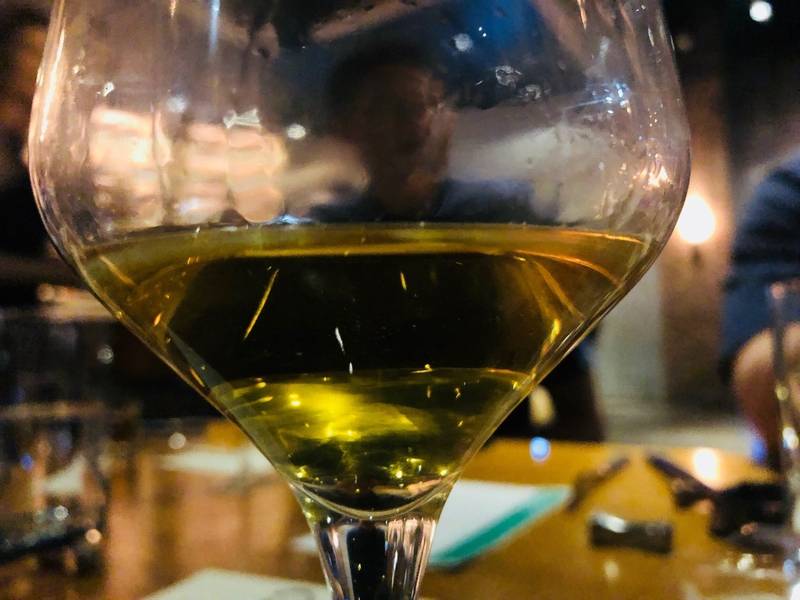
To conclude the evening, there was one more taste. The Ancient Treasure sake from Kanbara brewery that had been used in the caramelized onions was poured as a final treat. It’s the result of 10 years of aging, an uncommon practice in the sake world. Rather than wooden barrels that you might use to age a bourbon, Dr. Sato uses stainless steel barrels. Notice the caramel color of the sake, this is achieved through the anaerobic aging process, and is much like the browning of an apple. The resulting taste was uniquely different from anything we’d sampled; it had a bit of tartness to it and was perfect ending note to the dinner.
I’ve attended many tasting dinners, with beer pairings or wine pairings, and I always come away with a bit more knowledge I had before. But this event was a great lesson in science, geography, and cultural traditions, as well as an opportunity to consume amazing food and drink prepared with skilled hands. Kudos to Japan House, Miga, and the chefs for their collaborative endeavor.
All varieties of sake and shochu mentioned are available for special order through Fresh International Market.
Photos by Julie McClure








